On board Oceania Cruises’ Riviera – one of the seven ships in their fleet – Senior Executive Chef Heiko Baller kicks off a by-invitation-only galley tour by reeling off a dizzying list of figures that reflect the amount of food consumed over a two-week voyage. “28,000 fresh eggs, 1,150 lbs of tenderloins, 1,400 lbs of striploins, 6,500 lbs of chicken, 900 lobster pieces,” the German chef recites rapidly from memory, “6,000 lbs of potatoes, 1,500 lbs of Romaine lettuce, 1,000 lbs of strawberries, and 700 lbs of raspberries.”
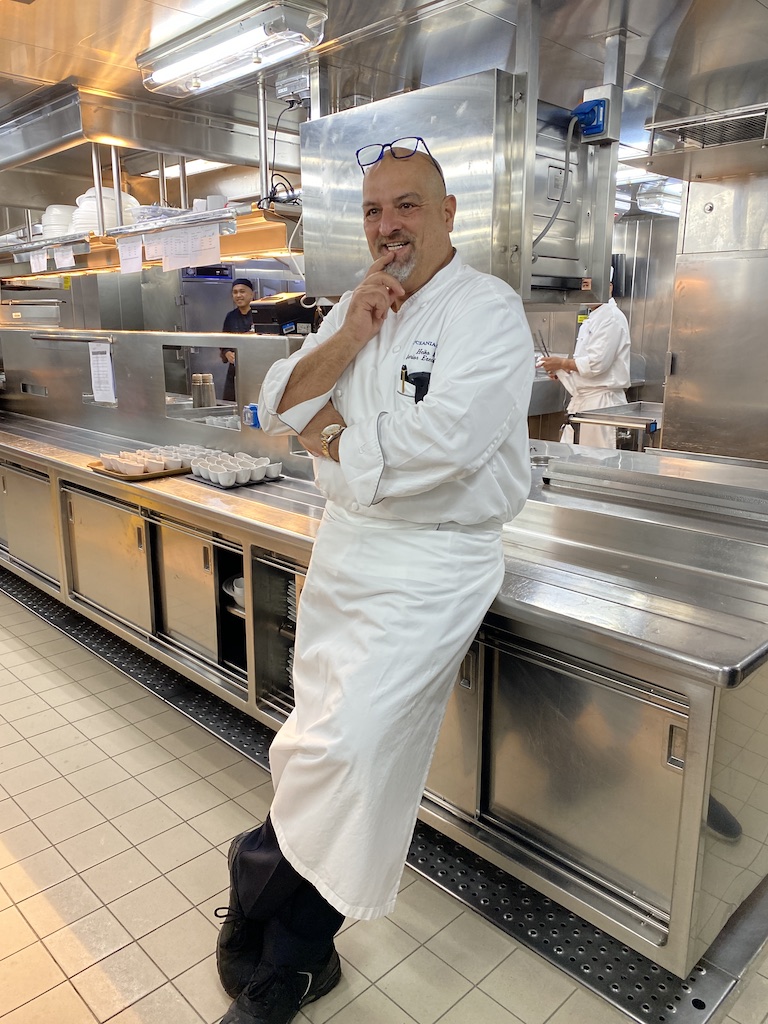
It’s hard to picture such vast quantities of produce being guzzled up, but a deep-dive into the Riviera’s enormous kitchen and food storage areas is about to demonstrate what it takes to feed a cruise ship with a maximum capacity of 1,250 guests and 800 staff members for a fortnight. A few steps into the galley, and the cornflower blue walls and pickled wood furnishings of Jacques (the ship’s French restaurant) are swiftly replaced by tiled floors, steel walls and countertops, and industrial strip lighting.
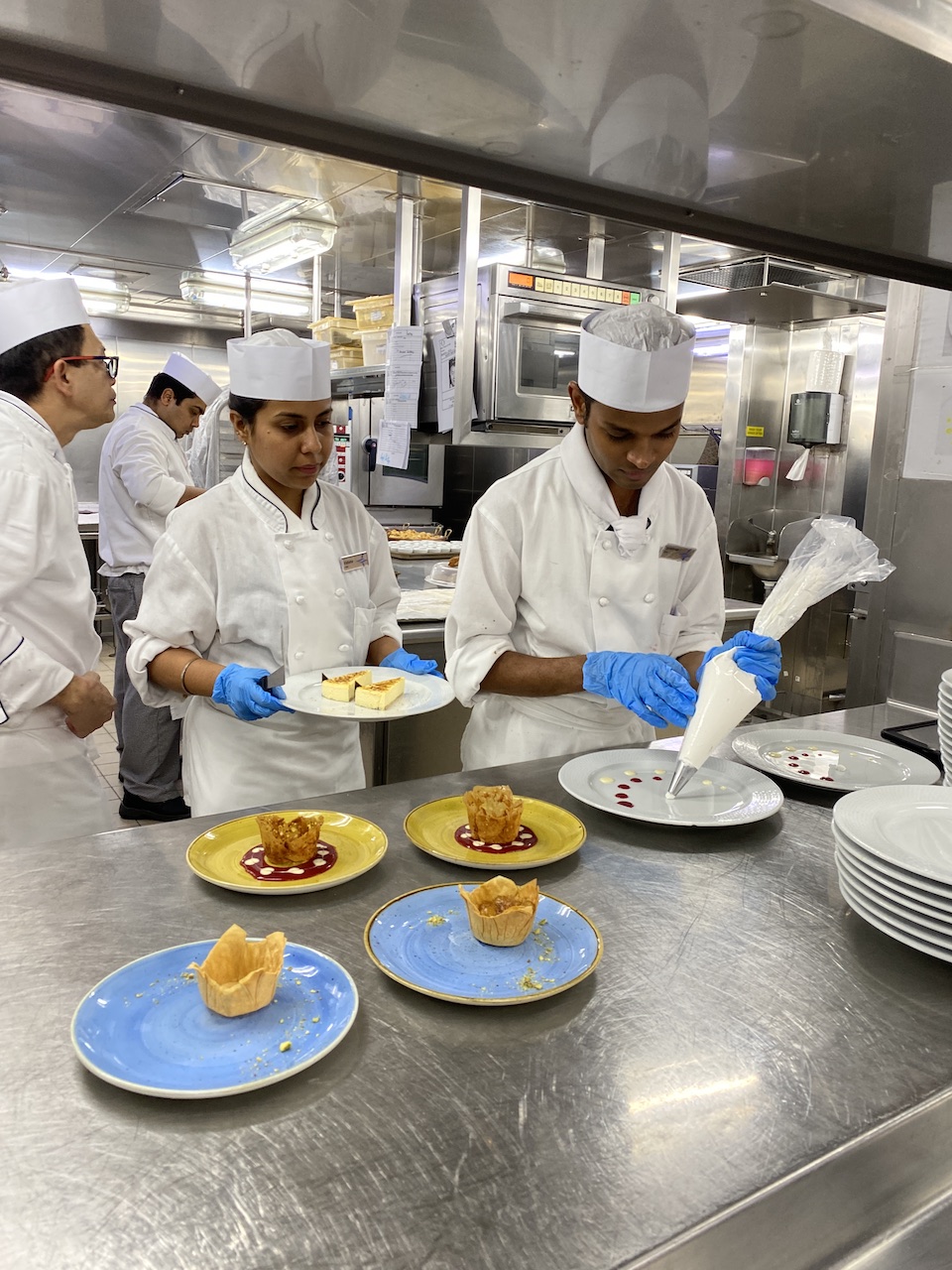
The semi-central kitchen is justifiably massive, given that this is where food is prepared for four of the Riviera’s nine dining outlets: the classic Gallic dishes of Jacques, the European-inspired gourmet cuisine of the Grand Dining Room, the contemporary interpretations of Asian specialties at Red Ginger, and part of the Terrace Café’s buffet spread. In ordinary hands, this would likely spell chaos, but Oceania Cruises and the culinary team of the Riviera have whittled the entire process – which resembles a complex military exercise involving advanced mathematics and plenty of moving parts – into an impressively efficient operation.

Chefs and cooks are assigned to different galley sections, such as the cold section where chilled salads, amuse bouches, and appetisers are prepared, or the boilers (usually the domain of the night shift crew) over which vats of soups and stocks bubble for hours. The main galley is understandably the busiest part, and the height of dinner service sees an unending procession of waitstaff punching in new orders, runners preparing trays, and chefs dictating new instructions to the galley. “Over these two metres, the action does not stop,” says Baller, gesturing towards a seemingly calm (for now) stretch of floorspace. “From 7:15pm until 8:30pm, it’s a marathon in here.”
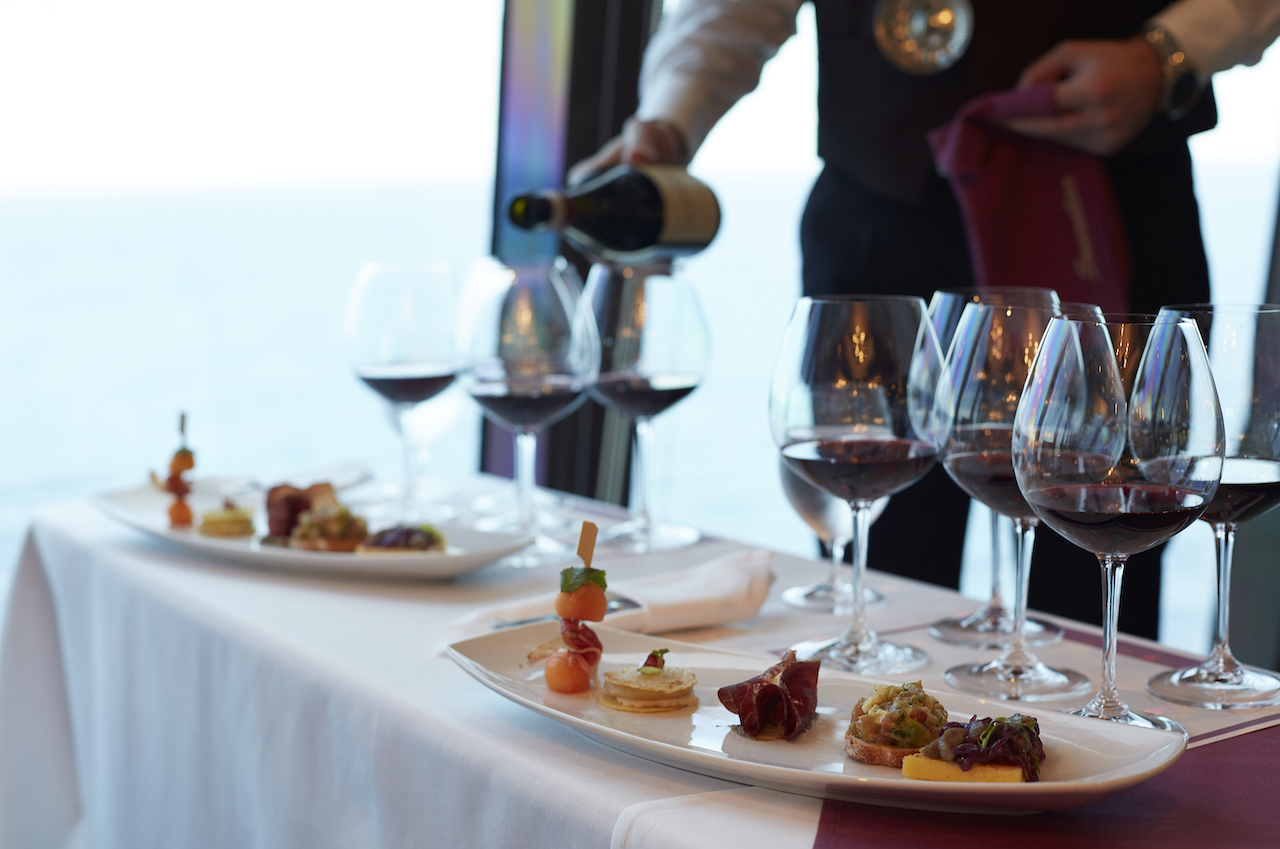
Technology plays a significant role in helping to avoid confusion in the galley. Orders are relayed over microphones and a large television screen displays meal counts, the number of incoming or missed orders, and portions served, giving chefs on the line and grill an indication of how quickly they need to work. “Before service begins, I might have 150 lobsters, and when I see the orders rising, I know I have to cook them very fast,” Baller explains, adding that dishes are pre-cooked in small batches to dispatch orders swiftly while prioritising freshness. The recipes devised by Oceania Cruises’ Culinary Advisory Board – up to 4,000 of them – are stored on iPads positioned in the Riviera’s galleys to guide cooks through the ingredients and preparation, complete with images of each dish’s standardised presentation.
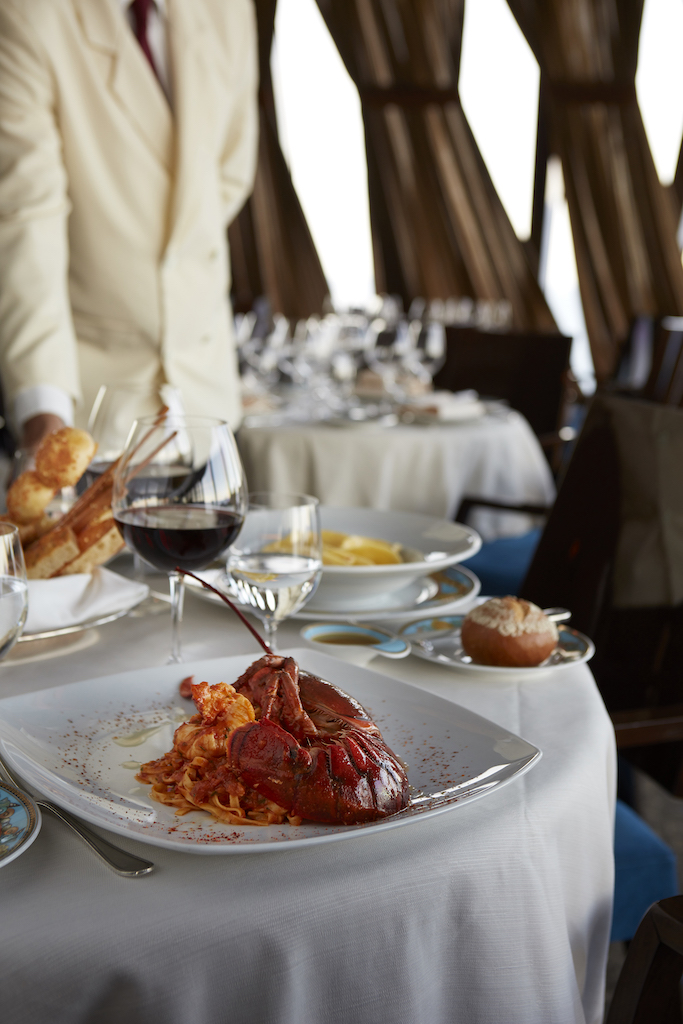
As limited as space may be within the confines of a ship’s galley, the culinary team works like a well-oiled machine. The bakery works around the clock to bake fresh bread three times a day for every meal service (one passenger consumes an average of two and a half bread rolls per day), turning out a steady supply of hand-shaped croissants, baguettes, and breadsticks. Meanwhile, Baller insists the dishwashing section is crucial to the entire galley’s operations. Three washing and sanitising machines are run by a team of eight dishwashers – and it’s loud, hot, and intense. “If we don’t have plates to serve on, there’s no need to cook,” says Baller. “This is a tough, dirty job, but it’s one of the most important ones and we respect what they do.”
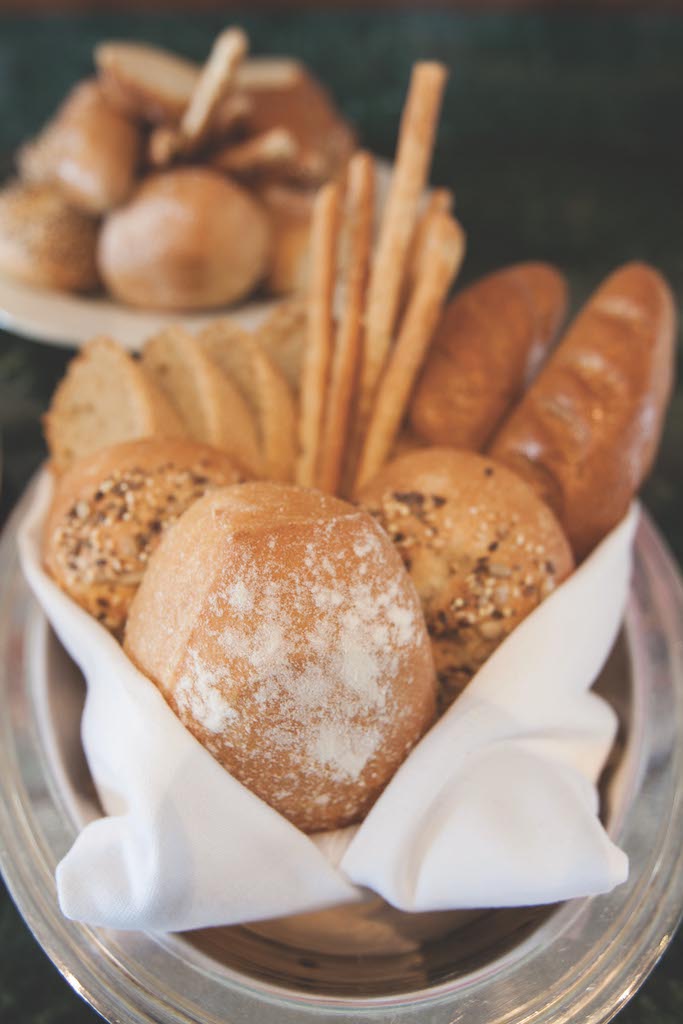
Compared to a standard commercial kitchen on land, all cooking has to be flameless in the galleys of the Riviera. Over-fire cooking at sea is out of the question, with steaks and seafood being seared on electricity-powered stoves instead. “Everyone here understands the danger of fire: in 30 seconds, it can fill this kitchen with so much smoke that nothing is visible,” warns Baller. He also emphasises how paramount hygiene and food safety are, with steel surfaces regularly sanitised according to strict regulations and leftovers beyond four hours being pulped then discarded. “There is no hotel or restaurant cleaner than a cruise ship. It is very important that we keep both the guests and the crew healthy, especially since the crew spend up to seven months on board.”
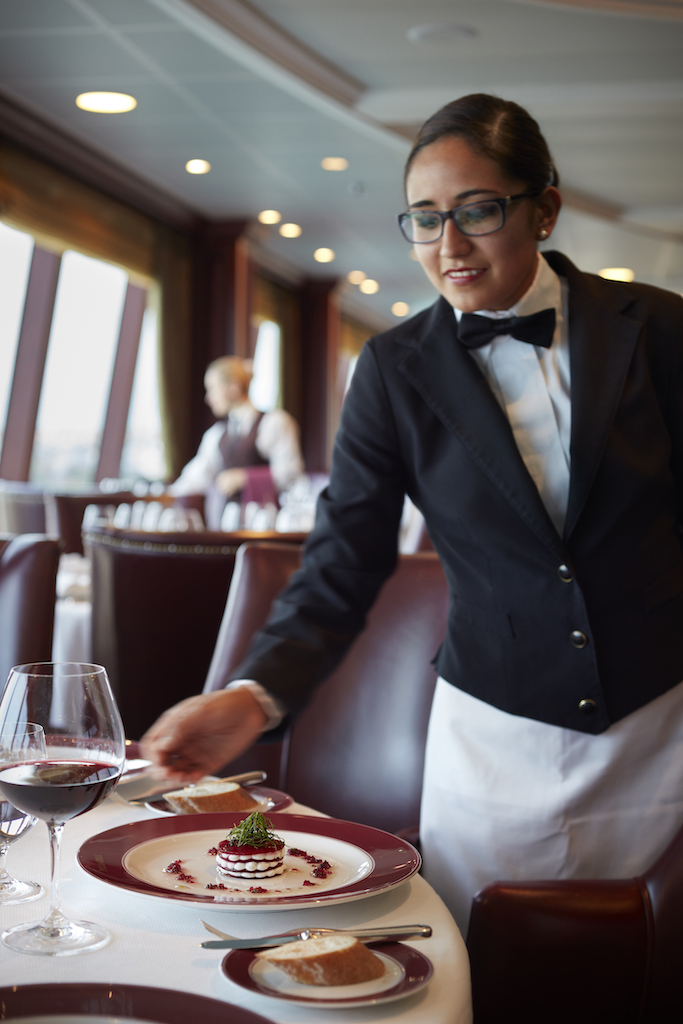
One very steep flight of stairs down, the hum of fridges – all set at different temperatures to suit a range of edible items – welcomes the tour group to the Riviera’s labyrinthine storage area. This section warrants a management team of its own to keep an eagle eye on supply levels, right down to the wheels of cheese in the single cold room reserved exclusively for AOC French fromages. Seeing so many pallets and crates stacked high with produce, it’s finally possible to fathom how the Riviera gets through 2,000 fresh eggs and 300 litres of milk each day.
“We have limited storage space on board, so our per-day calculations are very important: we can’t run out of key items that can’t be substituted, and it’s not like on land where if you run out of celery, you can go to another shop,” says Branko Damjanovic, Director of Food and Beverage. “That’s where we need the expertise and experience of all of us here at Oceania Cruises.” Orders for non- and semi-perishable ingredients are placed exclusively with approved suppliers (mainly in the United States) three months in advance, while fruits and vegetables are ordered from a supplier in the Netherlands or local suppliers along the ship’s voyage path about 14 days ahead.
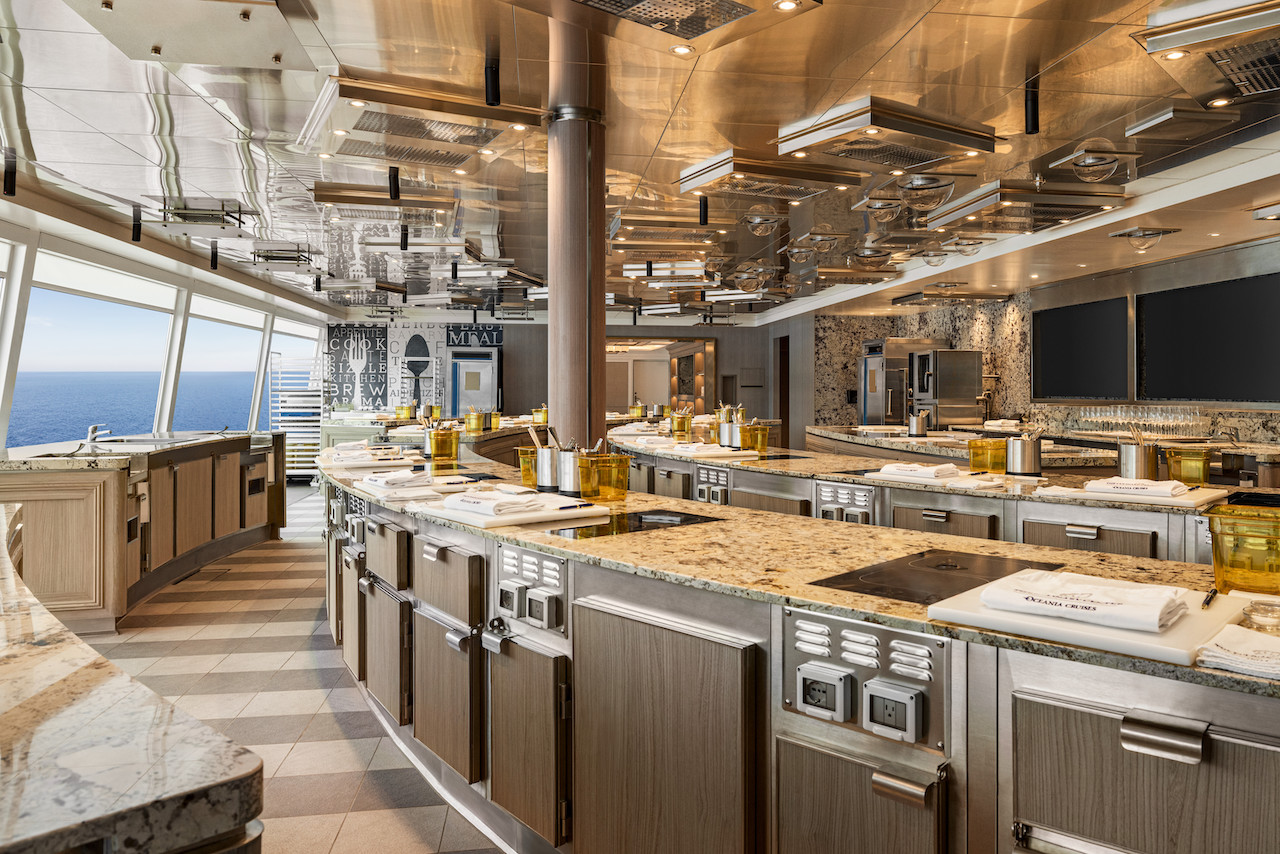
But even the best-laid plans of a stringently organised galley team are scuppered by a supply disruption or ingredients fall short of the required standard on loading day. “As a chef, you always have a Plan B and Plan C,” Baller notes. “Being prepared to adjust our menus goes hand-in-hand with ordering and chef preparation. If we’re informed that we will not receive key items, we have to be able to change our menus with professionalism, without passengers noticing or coming to a point where they want something, but it’s not available.”

The one non-negotiable ingredient that all Oceania Cruises ships must have in stock, Damjanovic reveals, is French flour. “We need French flour to ensure every croissant and baguette has the same look, taste, and crunchiness. We’ve tried using other flours and they don’t work – you need the right ingredient for the right product. We cannot compromise on the quality of our breads, so we always make sure we have a little extra flour in case we’re close to empty. If we run out of anything else, it won’t be a problem – but not this!”
_____
Story by: Renyi Lim
Images: Oceania Cruises
